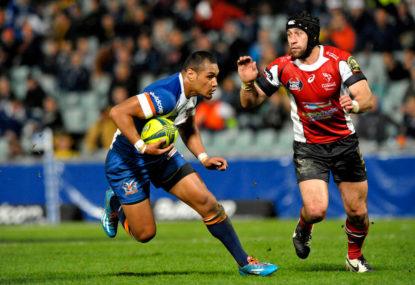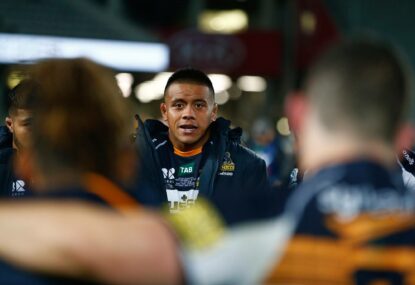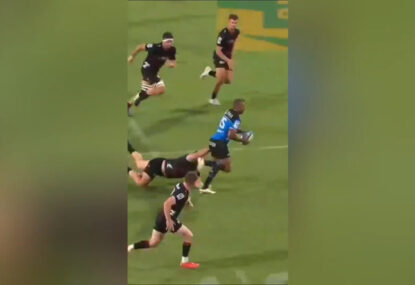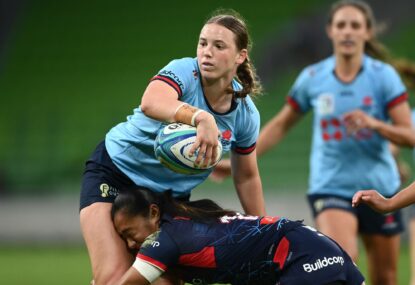It was encouraging to read last month that the ARU has looked to the fans to see how we can all endeavour on making rugby a successful, sustainable and profitable sport in Australia.
One area that hasn’t been mentioned in the media, however, or by the commentary from all the Roarers, is the implementation of a national draft system (similar to that of the AFL).
Throughout this article I would like to explore the micro-economics of ‘rugby talent’ from the colts and club level and how that transitions through the National Rugby Championship, five Super Rugby franchises, and right to the very top at a national level.
I would also like to highlight the current inequalities of club rugby and how it is detrimental to the game overall, and the challenges or opportunities that we face by implementing what I believe are necessary changes.
Finally, I would like to put forward a proposal on how the implementation of a draft could work and raise the standard of rugby in Australia. Throughout this article, I am going to scope my argument based on my experiences to the Shute Shield as a case study, however the trend is indicative across all states.
The objective of this article is to share some ideas within the rugby community to see how we can champion for fundamental changes in the existing frameworks and discuss how some of these proposals will ultimately benefit Australian rugby.
As it stands
The fundamental problem with Australian rugby is the exclusion of its grassroots and local administrators. As it stands now, there is a growing inequality of clubs and provinces in Australia’s rugby landscape.
We have continually seen the likes of Sydney University and Eastwood dominate the Shute Shield year after year, and the likes of smaller clubs such as Penrith and Parramattas struggle. Recently more established and mature clubs such as Norths and Gordon have failed to attract sponsors and retain their top players, while the likes of Easts and Manly can afford to recruit new players from other clubs with more favourable conditions and rewards.
By the same measure, there seems to be a glut of players who play in the same position confined to the one club. Hypothetically speaking it may be that Southern Districts will have five wingers and Western Harbour may have five second rowers who are consistently capable of playing first grade, yet have limited availability due to internal competition.
By no means am I trying to criticise the clubs that are excelling. Nobody could argue against Sydney University or Eastwood producing countless Wallabies due to the existing club cultures, training and development pathways that they offer.
What I will say is that this model, as it currently stands, is only successful in the short to medium term. For any organisation to be successful, it has to be shaped like a pyramid with a broad and strong base.
This is problematic as we are seeing a distortion of players being selected and offered professional contracts from the Super Rugby franchises. Only a handful of clubs are targeted while any existing and emerging talent from the other competing local clubs is potentially ignored.
Think, if you were an aspiring rugby player, where you would rate your best chance of gaining a professional contract, Sydney University or Penrith?
What is needed
For change to be implemented, it has to be fundamental. It has to be holistic and starts with a blank canvass. It has to be for the greater good and longer term benefit – where at some point, certain people (clubs in this example) have to man up and bite the bullet and accept a short-term loss for a long-term solution.
In accordant with economic theory, an increase in competition in a market structure will ultimately increase demand and lead to the increased quality of a service (I won’t bore you with the economic theory of production, that took five years and now a Masters to learn and comprehend).
Whether you agree with this or not, rugby, or sport in general, is a product. It relies on TV ratings, corporate sponsors and expanding on existing revenues to function. Rugby is languishing behind the other sporting codes, AFL is dominant across the nation, rugby league has a foot hold in NSW and Queensland, while football is the fastest and most participated sport in the country.
For the game to continue to grow and foster new revenues and increase participation rates beyond NSW and Queensland, a highly competitive club scene is necessary. It would be the beginning of forming a compelling and attractive argument for televising the game on either free-to-air or pay TV.
It baffles me to think that we only get one NRC game on a Thursday night on Fox Sports while the Curry Cup and National Provincial Championship (NPC) are both televised.
For the game to truly reach its potential and grow, it fundamentally has to attract a greater interest from the public. That starts at the very bottom and finishes at the top.
What is required is to redistribute existing players across clubs in order to increase the standard of the club rugby competition. This will in turn have longer term flow-on effects to the National Rugby Championship and flow upwards through to the Super Rugby franchises and Wallaby teams.
Think, the Curry Cup and the NPC and how the South African and New Zealand unions ultimately benefit from a highly competitive local and provincial model.
Deal breakers and opportunities
I understand that some of the ideas and topics have their flaws. Naturally there would be a lot of clubs and Super Rugby franchises that would be reluctant to let go of their best players. Funding this would also present its challenges as the ARU is already cash-strapped.
There would be some resistance if you were an up-and-coming talented rugby player and you were assigned to play for a languishing side. But the cream will always rise – and if you’re a good enough player, you’re more likely to spend more time playing Super Rugby.
However, for every cost there presents its own opportunity. Clubs and Super Rugby franchises can adapt and look for new recruiting methods, if Norths were to lose a number of their squad, they could recruit from the subbies comp or alternatively look to people playing in the rugby league. There is an infinite number of alternatives that clubs and Super Rugby franchises could find to replace any player outflows.
Think, how can we best increase participation rates at a grade (club) level and what incentivises current and future players to progress their careers as a sportsman. Taqele Naiyaravoro was playing for the Balmain Tigers in the NSW Cup, Nemani Nadolo couldn’t get a start at the Waratahs before being sent to play first grade for Parramatta. How many diamonds in the rough aren’t getting the chance to stand out?
My proposal
From a fan’s perspective I believe that implementing a national draft system on young and up-and-coming talent would be an effective tool of redistributing the current talent of rugby players across the board. We need a platform that provides for organic growth.
Here is a list of how I believe it could work:
1. The top 100 colts from around the country are assigned draft picks with each state limited to a maximum 20 draft picks (100 colts between five states).
2. The head scout of each Super Rugby academy is responsible for administrating players to the given club and NRC franchise.
3. The clubs who performed the worst, irrespective of their state, are granted the top picks.
4. These players are rewarded with a two-year Super Rugby academy contract and a three-year contract with the respective NRC franchise.
5. Draft picks can be traded. Should a player choose not to move, then interested clubs can compensate financially for taking him on.
The objective is so that all talent is fundamentally spread equally across Australia, thus creating a sustainable and highly competitive model which flows on from the club rugby landscape, into the NRC and Super Rugby so that everyone benefits.
I would love to hear what the Roarers have to say.



































































































